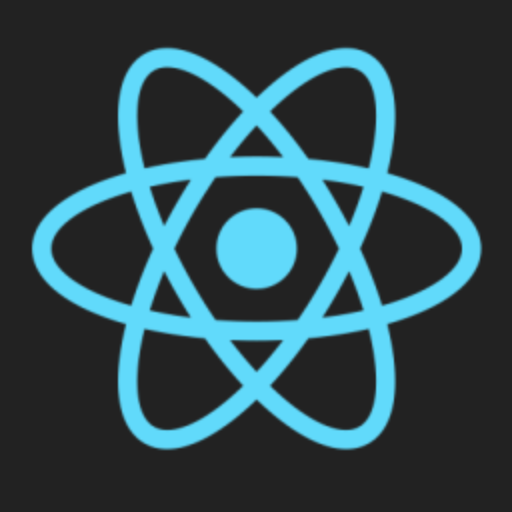react 3-advanced AI-powered coding assistant
AI-powered solutions for developers
Related Tools
Load More
React Expert
Expert React JS developer offering in-depth advice and solutions

React
Your personal React assistant and code generator with a focus on responsive, beautiful, and scalable UI. Write clean code and become a much faster developer.

ReactJs Expert
Build beautiful, efficient React apps. Ask me anything, from basics to best practices.

React Expert
An expert in React, providing guidance on concepts, best practices, and code troubleshooting.

React.js expert
GPT trained on React.js source code

React Dev Helper
A React coding assistant with the latest standards.
20.0 / 5 (200 votes)
Introduction to React 3
React 3 is a powerful version of the React library designed to provide developers with enhanced capabilities for building dynamic, high-performance web applications. The primary purpose of React 3 is to facilitate the creation of complex user interfaces by breaking them down into smaller, reusable components. This version introduces several new features and improvements aimed at optimizing performance, simplifying state management, and enhancing the developer experience. For instance, React 3 includes hooks, context API, and concurrent mode, which allow for more efficient state handling, better component composition, and improved rendering performance.

Main Functions of React 3
Component-Based Architecture
Example
Creating reusable UI components such as buttons, modals, and form inputs.
Scenario
A developer building a complex web application can break down the UI into smaller components, each responsible for a specific piece of functionality. This makes the code more manageable and reusable across different parts of the application.
Hooks
Example
Using the useState and useEffect hooks for state management and side effects.
Scenario
In a to-do list application, the useState hook can manage the list of tasks, while the useEffect hook can fetch data from an API when the component mounts, ensuring the state is kept in sync with external data sources.
Context API
Example
Sharing global data such as user authentication status or theme settings across components.
Scenario
A developer can use the Context API to create a global state for user authentication. This allows any component in the application to access and update the user's authentication status without needing to pass props through multiple levels of the component tree.
Ideal Users of React 3
Frontend Developers
Frontend developers looking to build dynamic, high-performance web applications will greatly benefit from using React 3. The component-based architecture and powerful state management tools like hooks and context API streamline the development process and enhance code reusability.
Full-Stack Developers
Full-stack developers who need to work on both the client and server sides of applications can leverage React 3 to create seamless and efficient user interfaces. Its integration with server-side frameworks and support for concurrent mode makes it an excellent choice for building scalable applications.

How to Use React 3
Step 1
Visit aichatonline.org for a free trial without login, no need for ChatGPT Plus.
Step 2
Familiarize yourself with the React 3 interface, ensuring you understand the available features and settings.
Step 3
Integrate React 3 with your existing project or start a new project using the provided templates and examples.
Step 4
Utilize the detailed documentation and community forums for troubleshooting and advanced usage tips.
Step 5
Explore common use cases and apply best practices for optimal performance and user experience.
Try other advanced and practical GPTs
Io
Your AI-powered content and research assistant.

LOGO & WEBSITE [UPDATED]
AI-powered logo and website creation.
SinestesIA Web
AI-driven content for better websites

Carousel Content Creator
AI-Powered Instagram Carousel Creator

Intro Extras
AI-powered introductions for any topic

Make Connections (NYT puzzle)
AI-powered daily word puzzle solver.

Creating video from text
AI-powered video generation

AI Write for BestAITo
AI-Powered Content Creation Made Easy

PHYS- Copilot
AI-powered solutions for physics challenges

Adaptive Social Media Transformer
AI-Powered Transformation for Social Media Content

브랜드 로고 디자인 만들기 - AI 제작 LOGO Maker
AI-Powered Logo Design Made Easy

Debian Buddy
AI-powered Debian Linux Assistant

- Optimization
- Troubleshooting
- Web Development
- Code Generation
- Integration
React 3 Q&A
What is React 3?
React 3 is an advanced AI-powered assistant designed to help developers create and troubleshoot code efficiently in Next.js, Supabase, and TypeScript environments.
How can React 3 assist in web development?
React 3 offers comprehensive code generation, debugging, and optimization tools, making it easier to implement complex functionalities and ensure seamless integration between frontend and backend components.
What are the prerequisites for using React 3?
To use React 3 effectively, you should have a basic understanding of Next.js, Supabase, and TypeScript, along with access to a compatible development environment.
Can React 3 be used for both frontend and backend development?
Yes, React 3 is designed to support both frontend and backend development tasks, providing detailed code solutions and explanations for a wide range of scenarios.
What are some tips for optimizing the use of React 3?
To optimize your experience with React 3, regularly consult the documentation, engage with the community for shared insights, and keep your development environment updated.